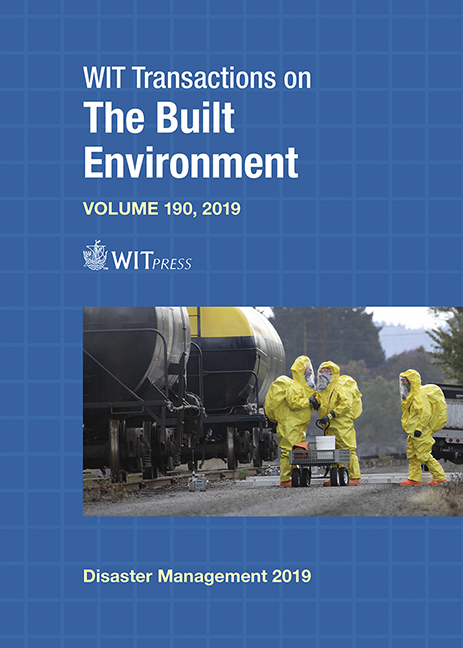SEISMIC EMERGENCY PLANNING IN THE MUNICIPALITIES OF ELCHE AND ALICANTE, SPAIN: FIRST STEP FOR DISASTER MANAGEMENT
Price
Free (open access)
Transaction
Volume
190
Pages
8
Page Range
137 - 144
Published
2019
Size
370 kb
Paper DOI
10.2495/DMAN190121
Copyright
WIT Press
Author(s)
JOSE ANTONIO HUESCA-TORTOSA, NOELIA AGEA-MEDINA, SERGIO MOLINA-PALACIOS, JUAN JOSE GALIANA-MERINO, JULIO ROSA-HERRANZ, JUAN LUIS SOLER-LLORENS
Abstract
The south and south-east of Spain are the regions with a higher seismic hazard in Spain. However, although a regional normative focused on the importance of developing seismic emergency planning in many of the municipalities of the Valencian Community was established in 2011, only Elche and Alicante have started to compute the seismic risk and it is planned that their emergency plans will be finished before the end of 2019. The seismic hazard update in the region has shown that the main earthquake scenarios, which will hit both cities, correspond to the Crevillente and the Bajo Segura faults (also responsible of damaging historical earthquakes). The main goal of the developed emergency planning (PAM) is to provide a fast, effective and coordinate response from the public and private stakeholders when a damaging earthquake happen. Assuring, therefore, the maximum protection to the inhabitants and infrastructures in the urban area. The basic functions of the PAM are: a) To establish clearly the organizational and functional structure for intervention in emergencies due to earthquakes that affect the territory; b) To assure the coordination between the emergency agencies at the national, regional and urban level; c) To map a seismic risk zonation that can be used to plan the intervention and locate non-damage infrastructures to be used in the emergency; d) To Increase the population resilience through emergency procedure and education.
Keywords
emergency plan, seismic risk, seismic resilience, emergency management, disaster management




